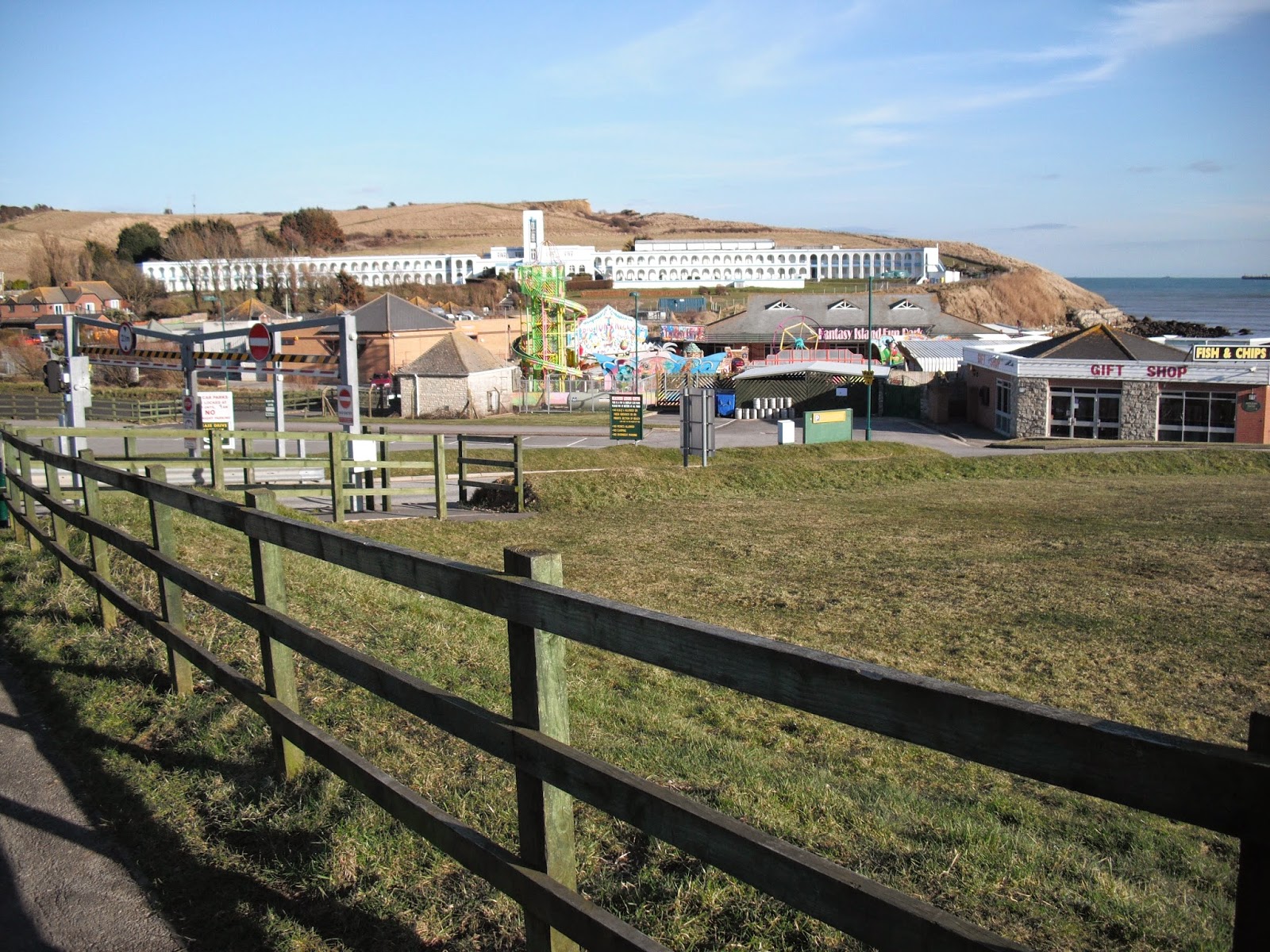Walk 116
Lulworth Cove to Weymouth (Dorset)
(Second leg of
English coastal walk – Broadstairs to Lands End)
Map: L/R 194
Distance: 13 miles or 20 km.Difficulty: moderate/quite challenging in parts
Terrain: mainly cliff paths
Access: Parking at both ends.
Public transport: Train and bus are possible to Lulworth but involve a train and a bus - bare bones service. Taxi best option. Good bus and train links from Weymouth to surrounding areas.
This walk features some of the most outstanding views on the
English coast. It is worth popping into the Heritage Centre at Lulworth Cove to
learn about the area’s geology. Follow the coast path westwards and up the
steps to Dungy Head. The view back makes clear the horseshoe shape of Lulworth
Cove. Forward are the outlines of Weymouth and Portland with the dramatic
cliffs of St Oswald’s Bay in the foreground.
Next up is the iconic ‘Durdle Door’, an arch of limestone
rock. A unique species of butterfly, The Lulworth Skipper, was discovered here
in 1832. The walk continues up to Swyre Head, the highest point of the Purbeck
Hills which form this part of the coast. (The area between Durdle Door and here
is known as Scratchy Bottom!)
A little further along is Bats Head. There is a small gap
near the point of the head and it is thought that erosion will eventually lead
it to looking much like Durdle Door.
Continue along to White Nothe then Ringstead Bay – an area
popular with divers. Burning Cliff, which overlooks the bay, is owned by The
National Trust and is so called because in 1827 a peat fire, possibly started
by lightning, burnt for six years.
A mile or so further along is the settlement of Osmington
Mills. The mills were water mills which were used to grind corn. The Smugglers
Inn, once the house of notorious smuggler, Emanuel Charles, dates back to the
13th century. John Constable came here in 1816 on his honeymoon and
the views inspired his paintings of the Weymouth coast.
Continue along passing Black Head and an activity centre and
on to Bowleaze Cove. This is a popular area for holiday makers with the
Waterside Holiday Park an additional attraction. However, it is the long white
building that sits above the village which is most impressive. This a grade 2 listed
building designed in a Spanish Riviera style. It was owned by Pontins between
1950 and 1960 but was back as a hotel when I went there. The exotic sounding
River Jordan exits on to the beach. Curiously, remains of elephants have been
found in the area.
Continue along Furzy Cliff where there is a panoramic view
of Weymouth and Portland. Descend on to the sea front where a piece of sculpted
rock marks the recent building of sea defences. The entry promenade road into Weymouth
has a row of colourful B&Bs/guest houses. Further along there is a mixture
of Georgian and Victorian buildings. Look out for the pavilion jutting out on
to the beach, this was built in 1960 to replace one destroyed by fire in 1954.
There are several things to look out for on the front. The
ANZAC memorial (Australia and New Zealand) commemorates the troops from these
countries who were stationed in Dorset and moved to fight in Palestine. The
colourful clock tower commemorates the jubilee of Queen Victoria in 1887. The
war memorial on the Esplanade features 3 events: 749 men killed off nearby Lyme
Bay when they were attacked by torpedoes when training in 1944; also in this
year 802 men died when their troopship sank in the channel; approx. 3000
American troops died after they left here for Omaha beach on D Day.
Further along is a full size replica of a bathing machine
used by King George 111 during one of the 14 summers he spent here between 1789
and1805. On first arriving he was so impressed by the views that he exclaimed ‘I
never enjoyed a sight so pleasing’. However, Queen Mary thought it a dull and
stupid place!
Do not miss the impressive George 111 statue. Part of his
cure, for what was then known as ‘the king’s madness’, (in fact a chemical
imbalance in his body which damaged his nervous system) was to bathe in the sea
water. The king’s visits helped to establish Weymouth as a popular resort and
the statue was funded by ‘the grateful inhabitants’. The railway station is
close to this area.
Photos show: Durdle Dor; Osmington Mills; Bowleaze Cove; View to Weymouth and Portland; George 111 statue in Weymouth.
Photos show: Durdle Dor; Osmington Mills; Bowleaze Cove; View to Weymouth and Portland; George 111 statue in Weymouth.





No comments:
Post a Comment